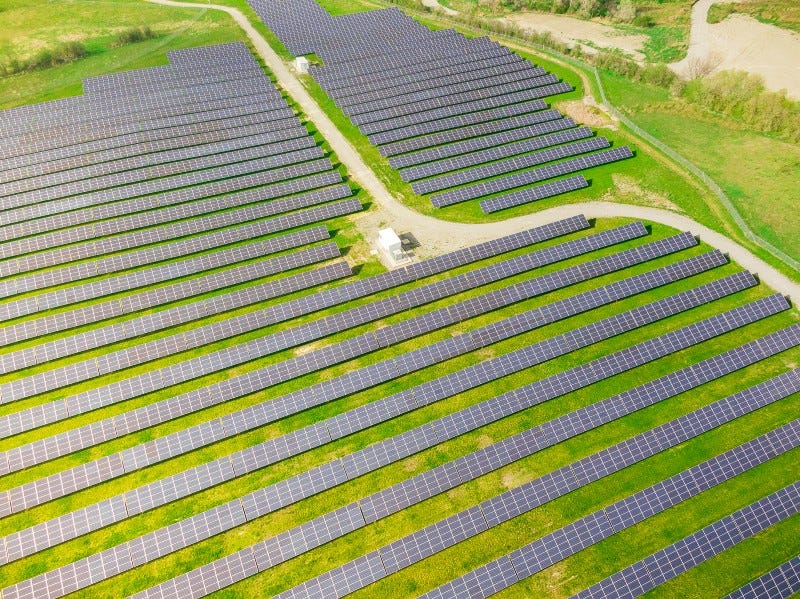A Suburb of Fort Myers Just Demonstrated How to Solve Climate Change
Climate Resilience and Green Cities Combine in Babcock Ranch

Saving our asses from climate change is possible. It just takes smarts and commitment, and we can be there. How do we know? Look at what happened in Babcock Ranch, Florida, a suburb of Fort Myers, where Hurricane Ian hit last week.
The story of Babcock Ranch illustrates what we can do to better handle climate change, while at the same time doing the right thing to alleviate climate change.
Babcock Ranch is a town of 2,000 homes, and it is totally electrified by solar arrays utilizing 700,000 panels. The arrays produce more electricity than the town can use, and many residents added rooftop solar of their own. EVs are common in Babcock Ranch.
This is how cities should be built.
But even more, they actually prepared for a huge hurricane like Ian, or even bigger. The city is designed so that streets will flood, but not houses. Planned landscaping holds and directs stormwater when there is too much. All power lines and internet lines are buried to prevent damage.
While most of the Fort Myers area was swamped, Babcock Ranch was not. They never lost power, they have clean drinking water, and no flooding. There was wind damage to some structures, but the intelligent design held. The key is that having their own solar arrays to provide all of their electricity, the town is an island among the 2.6 million Floridians who lost power.
A Third Way with Solar
Among solar advocates and climate change activists, there has been a debate about how to deploy solar. Should it be individual and local? Or should we build massive solar sites in the desert and ship power via the grid? The reality is that we will probably do both. Babcock Ranch, however, shows us a third possibility — local service and control. Cities and towns can build solar arrays nearby, and generate their clean energy locally. In other places, the same could be done with wind power. Rooftop and utility-scale solar sourcing are not the only options.
In Babcock Ranch’s situation, the solar generating system is owned and run by the local electric utility, which is probably the best choice since they have the expertise to set up and manage a service grid. The genius of the town, however, comes in its planning. The solar part is only one part, but the planning is established to help protect property values, maintain stability, and operate without the generation of greenhouse gases. City planning has value to the residents — it protected their homes and their investments in those homes, and it kept the city functioning through the crisis.
How important is this? Well, among the thousands of buildings lost in Ian, almost none were insured for flood damage. People who moved to Florida to retire may have put a big chunk of their money into their homes. People who have lived there all their lives could have all their money in their homes. And now their homes are destroyed or heavily damaged, and many will not have a way to rebuild. For those who do, it will be expensive.
But no one flooded out in Babcock Ranch. Wind damage will be covered by homeowner’s insurance. City planning provided a more real insurance policy than anything else could — it prevented flooding.
Babcock Ranch is a great example of how local authorities can set up local responses to climate. A city can decide to power itself with non-fuel-burning energy based on its resources and advantages. Babcock Ranch has sun. The northeast and the Midwest have wind. Some areas have hydro, tide, or even geothermal resources. What sets Babcock Ranch apart is that someone took the time to assess the resources, identify the opportunities, and execute a plan that could work to build a resilient community. All of our cities should be following that example.




thank you for sharing this bit of good news
This is good news, thanks for sharing these specific things that can be done to prevent future struggle and desctruction.